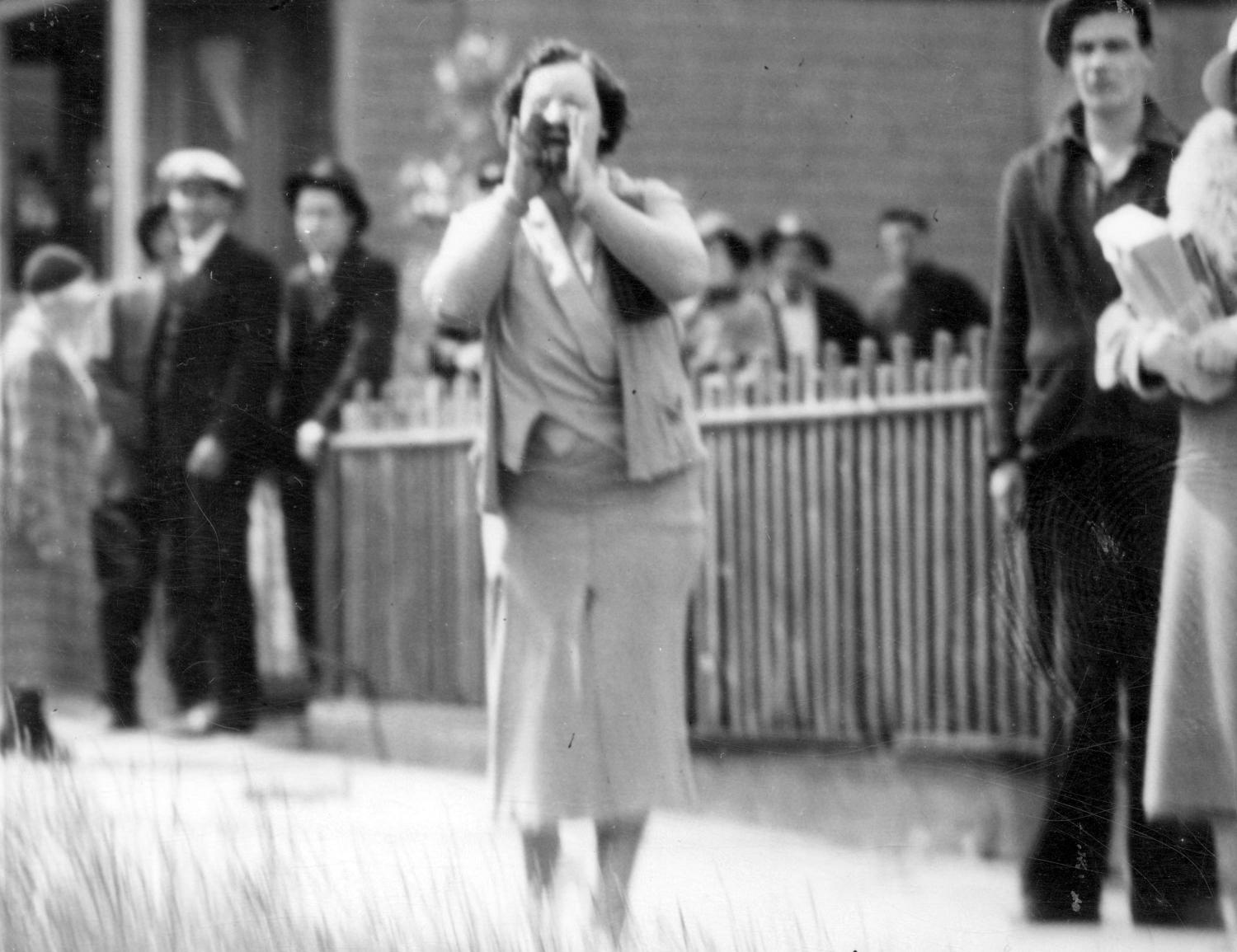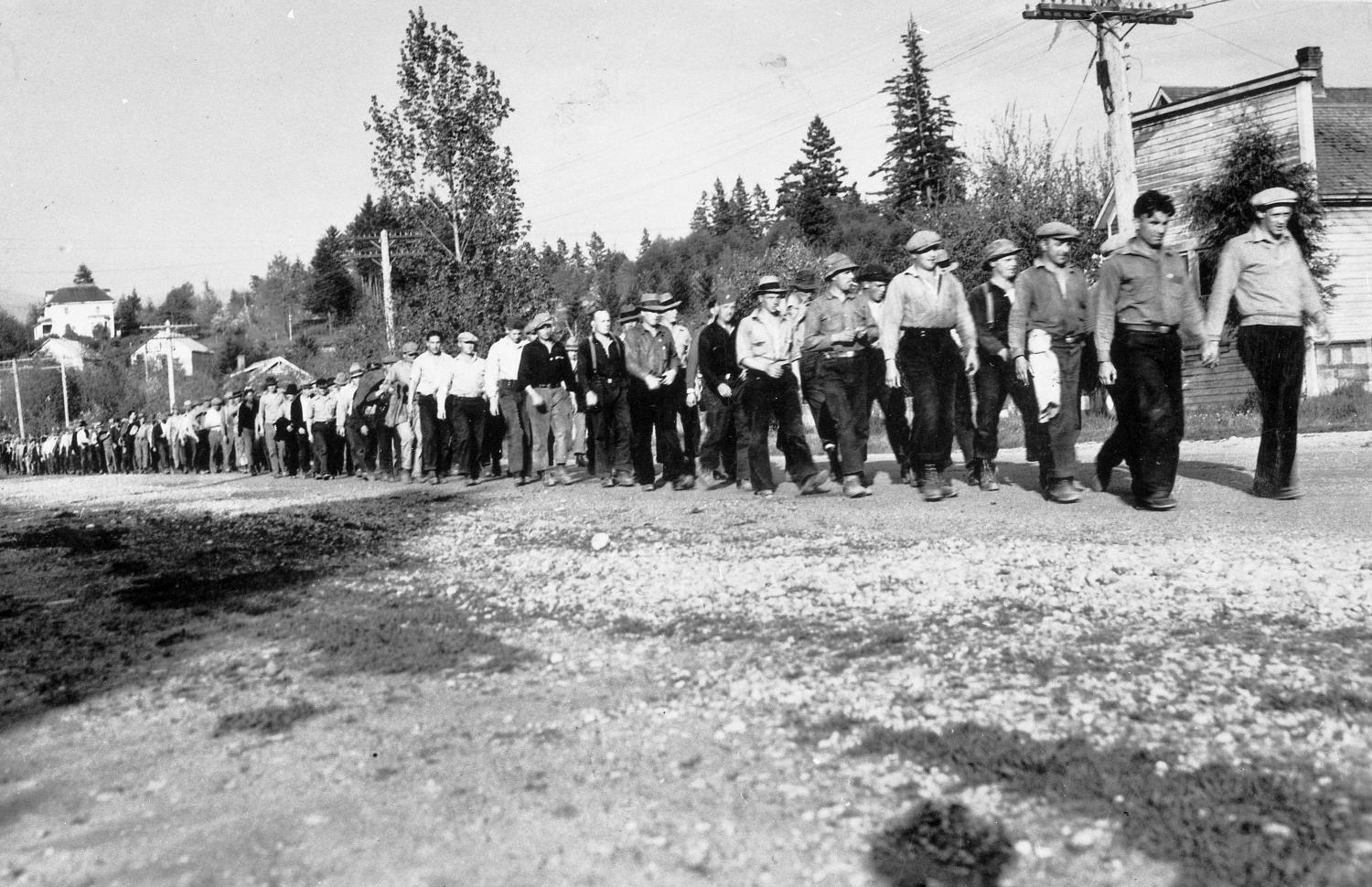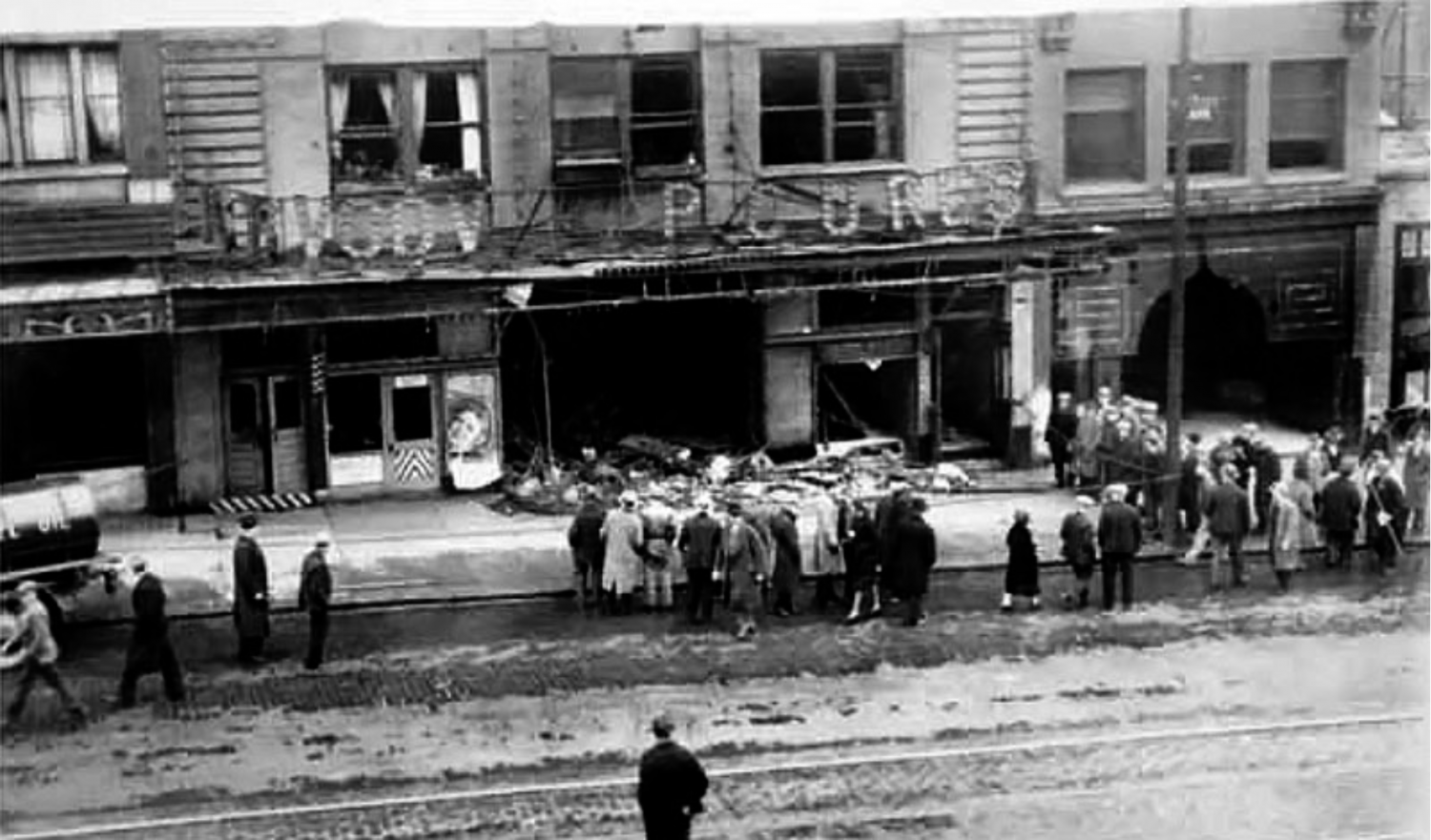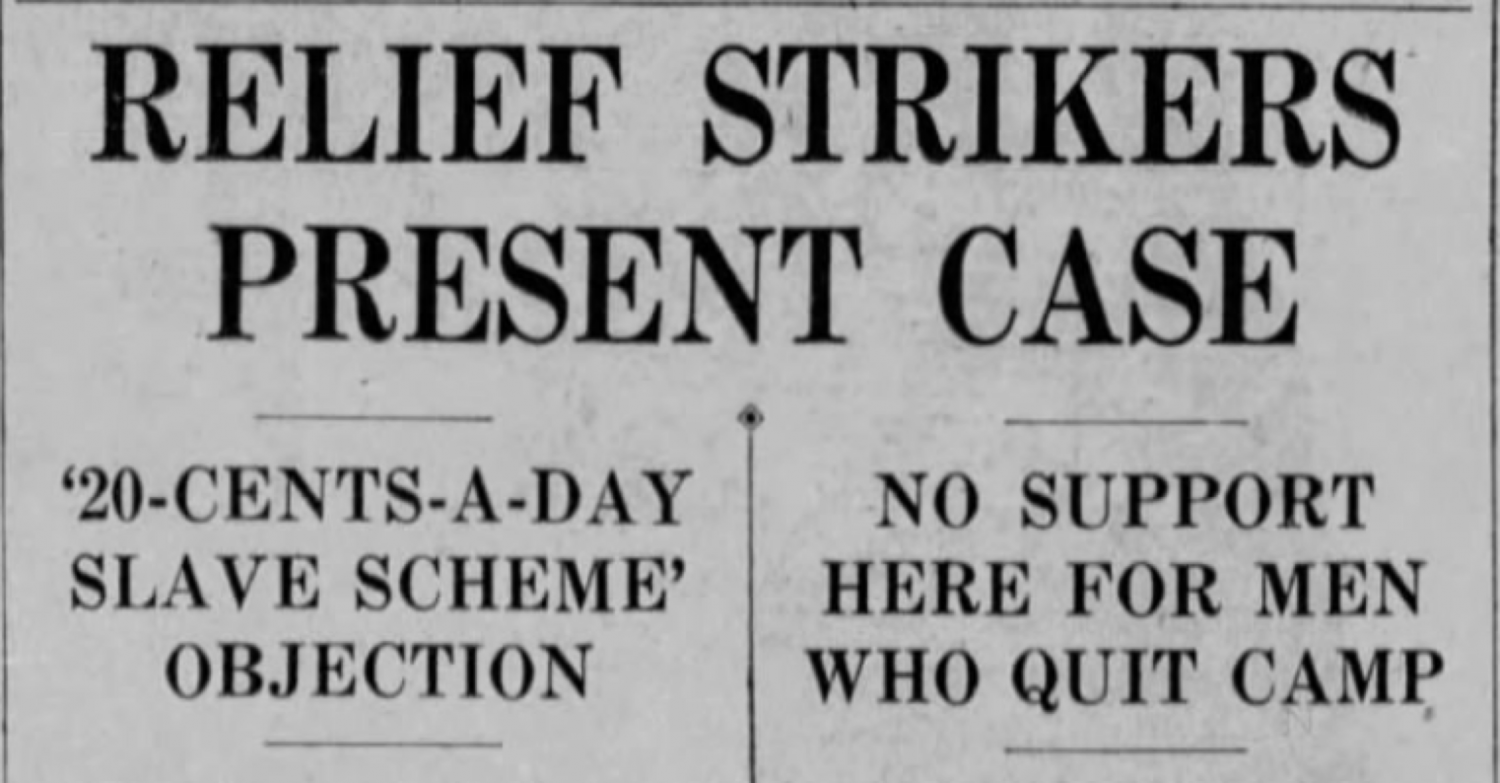Unemployed Workers Strike
Economic straits and government inaction cause mass frustration — and a labour movement
Date: 1933
By the early 1930s, scarcity had seeped into the average Canadian household. The rocky economy and emergence of a large unemployed underclass highlighted the immense inequality that had developed in Canada. For its part, the government provided little aid and instead turned to the police to surveil the transient men.
Pretty soon, public discontent had reached an all-time high. Street fights and protests broke out in Vancouver. Crime took off. In one instance in 1933, Vancouver's Unemployment Relief Office was raided by a crowd of 150 unemployed men. They destroyed the office's files and tore out telephone wiring before fleeing the scene, evading police capture. That same year, a bomb was set off at the Royal Theatre on East Hastings Street.
City officials attempted to dismiss the agitation as the machinations of communists. And while that wasn't entirely accurate, it was true that Canadian communists had begun organizing. In 1933, they started the Relief Camp Workers' Union (RCWU), an offshoot of the Communist Party of Canada's trade union, the Workers' Unity League. The new organization united the "unemployed workers" the federal government had herded into rural relief camps. Theoretically, the camps provided much-needed work for Canada's growing population vagabonds through infrastructure projects like the building of highways. However, the encampments were beleaguered with poor food and living conditions. For their hard, physical labour, the men received only 20 cents per day — worth slightly more than $3 today.
Frustrated men across Western Canada quickly joined the RCWU, which had begun encouraging its members to abandon their posts as a form of protest. In December 1934, the new union held its first walkout. Hundreds of men deserted the camps and made their way to Vancouver. But the walkout was short-lived, and the strikers soon returned to camp while the RCWU organizers regrouped. Only a few months later, in April 1935, another larger and more successful walkout took place: the famous On-to-Ottawa Trek.
Sources:
1. Belshaw, John Douglas. “The Great Depression.” Canadian History PostConfederation, BCcampus, 17 May 2016, opentextbc.ca/postconfederation/chapter/8-5-the-great-depression/.
2. McCallum, Todd. Hobohemia and the Crucifixion Machine: Rival Images of a New World in 1930s Vancouver. Athabasca University Press, 2014.
3. Mickleburgh, Rod. On the Line: a History of the British Columbia Labour Movement. Harbour Publishing, 2018.





